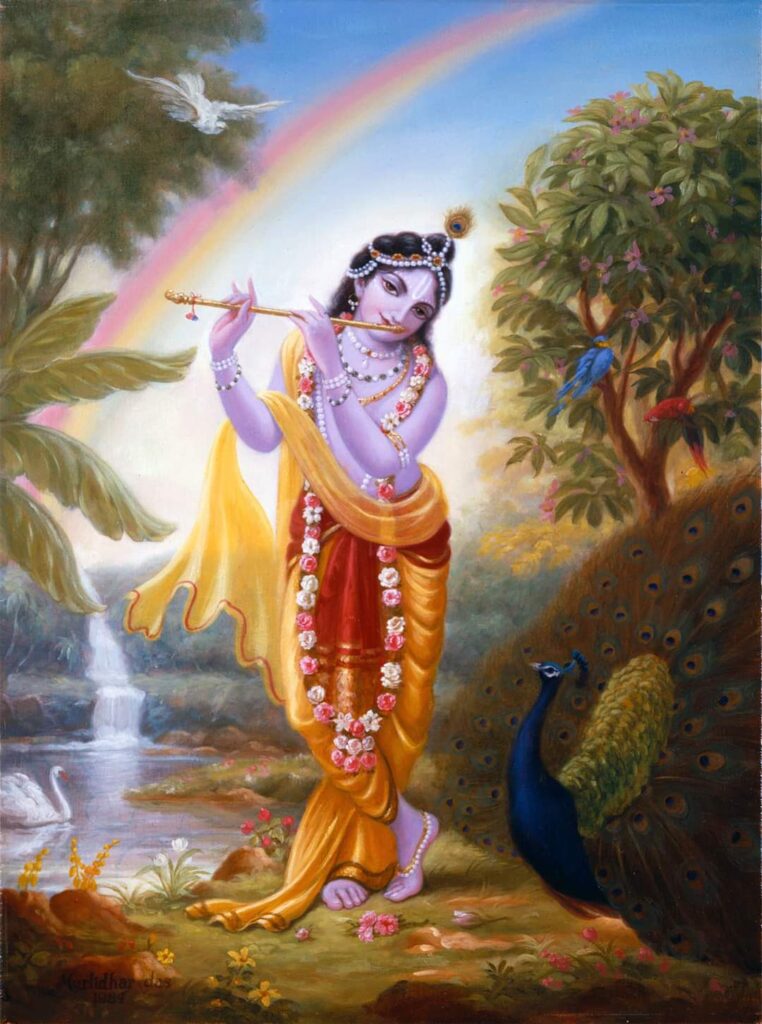In the first canto of Srimad Bhagavatam, Narada Muni tells the story of his previous life to Vyasadeva and urges him to write the Srimad Bhagavatam, explaining exclusively about the pastimes of the Lord. At the end of chapter 6, Narada Muni leaves after instructing Vyasadeva.
What happened after that. What did he do after receiving these instructions from his spiritual master? Suta Goswami describes the meditation of Vyasadeva before starting his work. Meditating on the bank of the river Sarasvati, he was able to see the Lord along with His external energy.

The Sarasvati is a river described in the Vedic texts that is not available currently. It was a great, sacred river in the North of India, close to what is now New Delhi, that nourished several important kingdoms in Vedic times. From this description, it seems that Vyasadeva was situated in his hermitage in the Himalayas, close to the nascent of the river.
“Thus he fixed his mind, perfectly engaging it by linking it in devotional service [bhakti-yoga] without any tinge of materialism, and thus he saw the Absolute Personality of Godhead along with His external energy, which was under full control.” (SB 1.7.4)
Mayavadis think that Maya can capture parts of the impersonal Brahman and when these parts realize their real nature they become liberated and merge back into the Supreme Brahman. This verse however dismisses this theory. Maya is not an independent force, but simply one of the energies of the Lord, who is completely under His control. Not only Maya is not capable of touching the Lord, but it is incapable of even touching the individual souls who are engaged in the eternal service of the Lord. Only the souls who reject their eternal nature and become averse to the service of the Lord are put under the care of the external potency of the Lord and become thus covered by Maya.
Originally, the soul has nothing to do with matter. However, when the soul comes in contact with it, he falls under the influence of the three modes of nature, and under the influence of the false ego, identifies with many different temporary forms in this material world. Under the influence of the false ego, the soul is prepared to accept any identity in the material world, be it of a demigod, a human being, or even a hog, a dog, or a plant. Anything except his original position as a servant of Krsna. In all these forms the soul performs material activities and thus becomes more and more entangled in the results of these activities, Karma, suffering perpetually in the material world, life after life.
Vyasadeva however, didn’t just see the causes of the misery of the living entities, but also the solution for such miseries:
“The material miseries of the living entity, which are superfluous to him, can be directly mitigated by the linking process of devotional service. But the mass of people do not know this, and therefore the learned Vyāsadeva compiled this Vedic literature, which is in relation to the Supreme Truth.” (SB 1.7.6)
The goal of the process of devotional service is to reconnect the soul with Krsna, reestablishing our original position. That’s why devotional service is described here as the linking process.
The real goal of all Vedic literature is to bring one to the platform of devotional service, but in most of the books that compose the Vedas and even many of the Puranas, this point is not so clear. Vyasadeva thus meditated on writing a book that would directly convey this message and nothing more. In this way, he conceived the Srimad Bhagavatam, a book capable of extinguishing the lamentation, illusion, and fearfulness from the hearts of people. After compiling and revising this original version of the Srimad Bhagavatam, he taught it to his son, Srila Śukadeva Gosvāmī.
